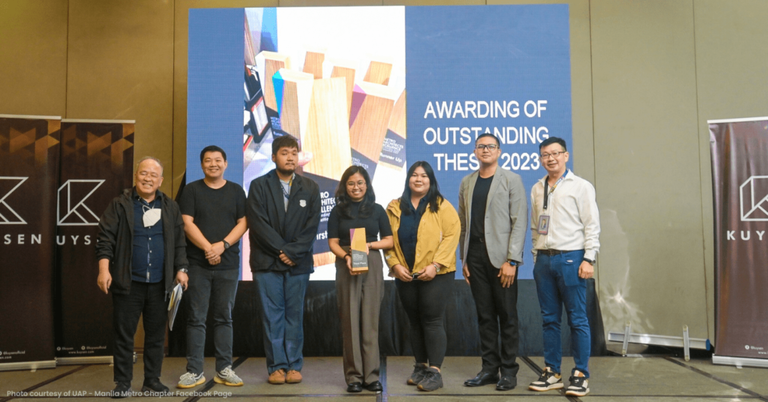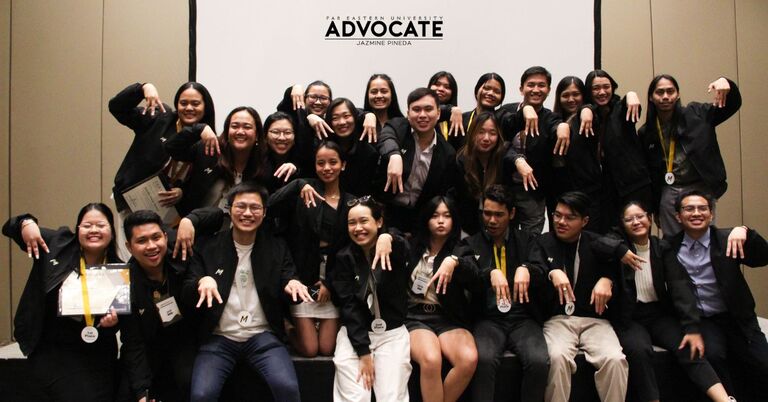
Women workers heighten demands for Menstrual Leave Act passage
- April 02, 2025 14:17
FEU Advocate
July 11, 2023 06:09

By Lynette Joy A. Pasajol
Far Eastern University (FEU) Institute of Architecture and Fine Arts (IARFA) student Maisie Suyat’s thesis entry ‘BANYUHAY’ placed third in the Metro Architects Xcellence (MAX) 2023: Most Outstanding Thesis Competition held at Greenhills, San Juan last June 29.
The MAX 2023 thesis competition, in collaboration with the United Architects of the Philippines’ (UAP) Manila Metro Chapter, is an event open to graduating students from each invited college of architecture for the academic year 2022-2023.
Invited architecture schools included Adamson University, Batangas State University, Far Eastern University, Mapua University, National College of Science and Technology, National University, Polytechnic University of the Philippines, University of Batangas, University of Perpetual Help System Dalta, and University of Santo Tomas.
The said competition is a Metro initiative to help level up Philippine architecture practice across the board.
Suyat’s winning thesis was titled ‘BANYUHAY’ (Bagong Anyo ng Buhay): Centering Unprivileged Neighborhood through Productive Architecture: A Proposed Self-Sufficient Vertical Community in Baseco, Manila.
In an interview with FEU Advocate, Suyat shared that the idea of a self-sufficient vertical community was based on the existing and current situation of housing backlogs in the country.
“While formulating my thesis, I was able to understand that in order to provide complex solutions for the continuous growth of housing backlogs, I should understand the roots of the problem first,” she said.
Suyat added that the problem does not lie within the community but in the planning approach and requirements of Batas Pambansa (BP) Blg. 220 and other building codes.
By definition, BP Blg. 220 is an act that allows the Ministry of Human Settlements to create and enforce varying levels of standards and technical requirements for affordable housing projects in both urban and rural areas, different from the ones previously established by Presidential Decrees numbered 957, 1216, 1096, and 1185.
The winning thesis outlined a comprehensive strategy that integrated physical and non-physical elements of the community to uplift the unprivileged neighborhood and introduce a new design paradigm for socialized housing.
“The concept of self-sufficient vertical communities was based on the existing problems and situations that I noticed and studied in Baseco compound. The concept was based on my understanding of centering unprivileged communities through productive architecture,” Suyat explained.
Productive architecture for the Old South Site community block of Baseco compound was derived from four key theories encompassing physical, social, economic, and environmental aspects.
The Baseco compound is a coastal community that lacks adequate housing provisions due to its location surrounded by commercial, institutional, and recreational zones, making it the largest slum community in the National Capital Region (NCR), according to the World Bank Organization.
“I believe that my thesis can be developed in real-life situations because it reflects the urgency and necessity of existing design requirements under BP 220 to have an upgrade given that some of the provisions are already obsolete and inapplicable in our generation and future generations. My study is reiterating the need for complex solutions in solving complex problems,” Suyat said.
Encompassed by a 7.11-hectare land area in the Baseco compound, accommodating a population of 615 families, the extensive scope of the project proved to be a constant struggle.
The graduating student expressed difficulty in meeting deadlines for endorsement in her final defense leading to rushed submissions for progress.
Despite the setbacks, her thesis entry received recognition from esteemed architects like Ar. Edward Co Tan, Ar. Daniel Go, and Ar. Jose Siao Ling, for challenging an existing architectural code while providing strategic solutions aimed at uplifting an underprivileged community.
Architecture students from the University of Batangas and Adamson University ranked first and second, respectively.
(Photo courtesy of UAP - Manila Metro Chapter Facebook page)









